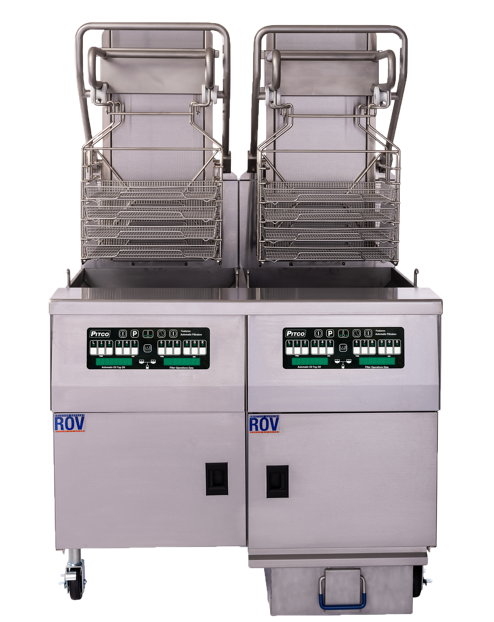Turn Chicken Into a Profit Point in Your Grocery or Retail Operation

You could easily argue that high-quality, juicy chicken is America’s favorite protein. Americans consume roughly eight billion chickens annually, amounting to more than 80 pounds per person, per year. And when serving chicken in grocery stores, this level of consumption comes with profit potential.
A report from Statista details that chicken consumption equals more than 100 pounds per person* in the United States. And where is the majority of that chicken sold? In supermarkets and grocery stores. Nearly 53 percent of all chicken sales** are made in grocery and retail settings. Couple raw meat sales with the popularity of prepared foods, and chicken might become even more prevalent on grocery store menus. What’s popular? Rotisserie chicken and certainly fried chicken are consumer favorites***.
 Consider the recent fried chicken and fried chicken sandwich wars. There’s been an enormous amount of press underscoring this popularity, so the question becomes, how can grocery store and retail operations capitalize? What are the objections to starting a fried chicken program in these types of operations? And how can operators overcome them? Let’s review these questions through the lens of the Pitco ROV Rack Fryer.
Consider the recent fried chicken and fried chicken sandwich wars. There’s been an enormous amount of press underscoring this popularity, so the question becomes, how can grocery store and retail operations capitalize? What are the objections to starting a fried chicken program in these types of operations? And how can operators overcome them? Let’s review these questions through the lens of the Pitco ROV Rack Fryer.
The Challenge of Volume Chicken in Grocery Stores
When it comes to producing large quantities of fried chicken, operators of any type are most limited by the volume of their fryers. Pitco developed the ROV Rack Fryer to mitigate this issue, making it possible to cook up to 64 pieces of fried chicken at once.
The Challenge of Frying Oil in Grocery Stores
One of the biggest challenges in a fried food program is oil consumption and handling. ROV actually stands for “Reduced Oil Volume,” meaning these units can process more chicken with less oil than the previous Pitco generation of rack fryers. ROV models reduce the amount of oil required from 100 pounds to 73 pounds while simultaneously increasing the processing capacity of the unit.
Handling used frying oil can also be a challenge for grocery stores, with prepared foods service areas often being far from loading docks where oil is typically disposed of. The ROV Rack Fryer can be hooked up to a waste oil management system eliminating the need to ever touch the oil making maintenance easier.
The Challenge of Labor in Grocery Stores
Right now, labor is the top challenge in foodservice. The cooking and oil filtration processes must be monitored when it comes to fried foods in grocery stores. Pitco’s ROV Rack Fryers use capacitance sensors to help automate the cooking process and SOS sensors to monitor the quality of cooking oil. When it’s time to filter oil, the fryer can run a filtration cycle automatically.
Ready to serve chicken in your grocery store or retail application? Schedule a Pitco ROV fryer test drive at a location convenient to you.
Sources:
* Statista
*** USDA
Topics
- Restaurants (93)
- Foodservice Industry Trends (57)
- Beverage (41)
- Ventless (37)
- Automation (30)
- See All Topics

